- Books Name
- Class-8 Science Book
- Publication
- PathSet Publications
- Course
- CBSE Class 8
- Subject
- Science
Laws of Reflection
What happens when light falls on a mirror?
We know that light is a form of energy that is responsible for the sense of sight in the human eyes. Light can be called radiation that is emitted, reflected, or absorbed by different objects.
A mirror is a glass having a shiny surface. When light falls on a mirror it is reflected back. Hence a mirror changes the direction of light that falls upon it.
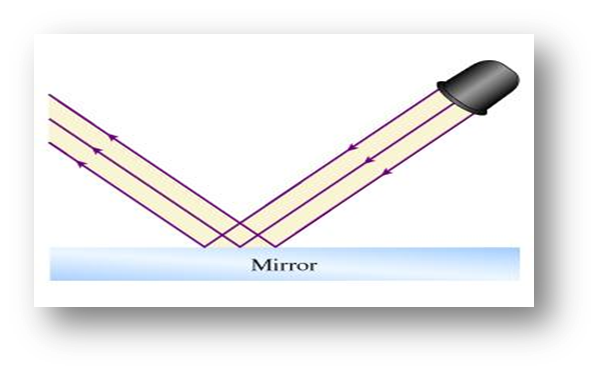
Reflection of Light: Bouncing back of light after striking a shiny or polished surface, in the same medium, is called reflection.
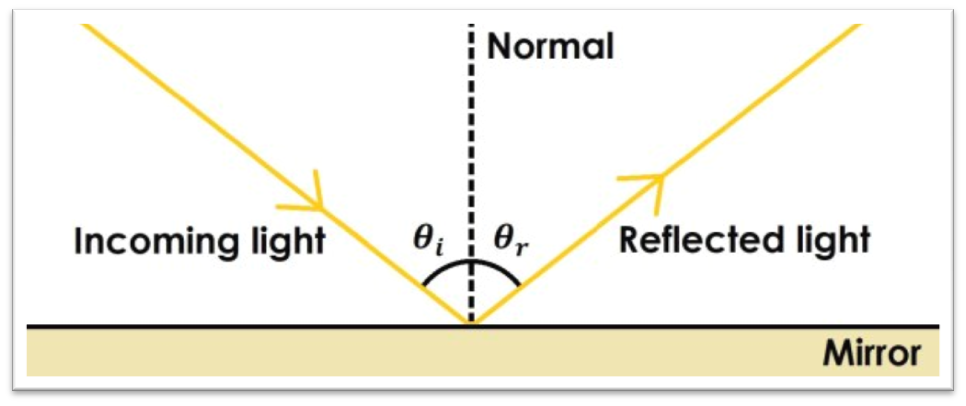
When light strikes a surface and bounces back, it is called reflection.
Incident ray - The ray of light that falls on the surface is called an incident ray.
Reflected ray - The ray of the light that gets reflected back from the surface is called a reflected ray.
Normal - It is an imaginary line that is drawn perpendicular to the reflecting surface at the point where the incident ray strikes the surface or at the point of incidence.
The angle of incidence (θi) - It is the angle that the incident ray makes with the normal.
The angle of reflection (θr) - It is the angle that the reflected ray makes with the normal.
First Law of Reflection
(i) ∠i (Angle of incidence) = ∠r (Angle of reflection)
The angle of incident is equal to the angle of reflection
The Second Law of Reflection
(ii) The incident ray, the normal at the point of incidence, and the reflected ray all lie in the same plane.
→ The laws of reflection are valid in regular as well as irregular or diffused reflections.
àThese laws of reflection are applicable to all types of reflecting surfaces including spherical surfaces.
Image formation by a Plane Mirror
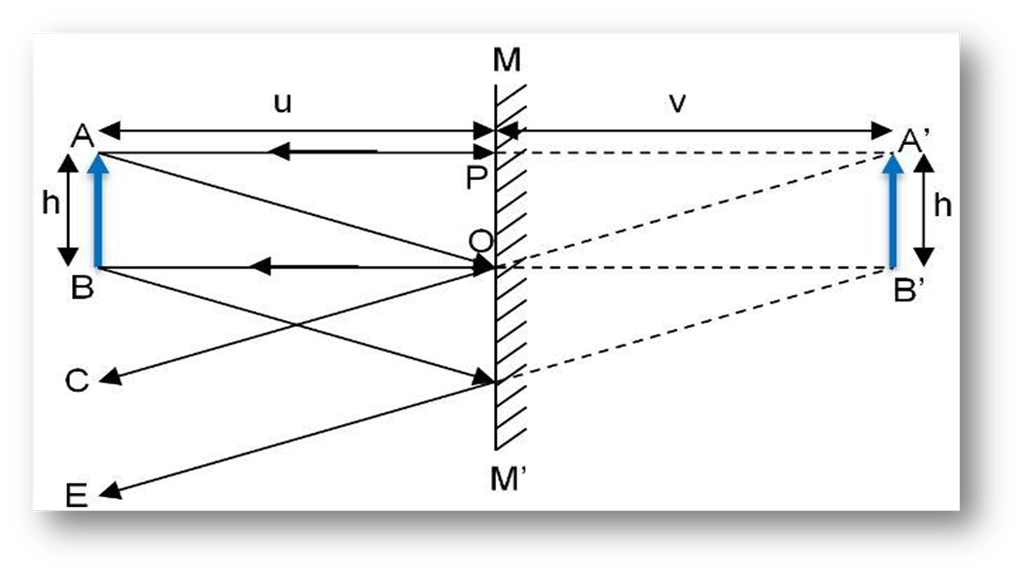
- Consider the figure given above. Here object AB of height ‘h’ is placed at a distance ‘u’ from the mirror.
- When the rays of light from this object fall on the mirror, the image of the object is formed inside the mirror.
- Consider the incident rays that fall on the mirror: AP, AO, and BO. These incident rays are reflected back from the mirror as PA, OC, and OB.
- The rays PA and OC are diverging rays hence we can extend them behind the mirror to find the point of intersection that is A’.
- Similarly, the other reflected rays are extended backward and virtual image A’B’ of height ‘h’ of the object AB is formed on the mirror.
- Characteristics of the image formed by a plane mirror are the following:
- It has the same height as that of the object.
- The distance between the image and the mirror and the object and the mirror is always equal.
- The image is erect or upright.
- The image is laterally inverted.
- It is a virtual image because it is formed by the apparent intersection of diverging rays.
Multiple Reflections
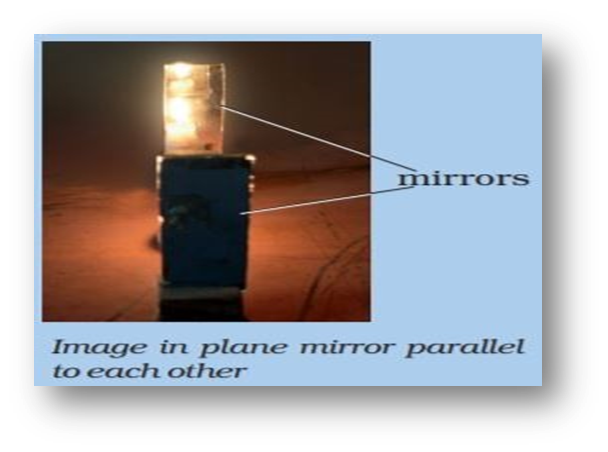
The image formed by a Plane Mirror is:
- of the same size as that of the object
- left-right inverted
- erect and virtual
- formed behind the mirror at the same distance as the distance of the object in front of the mirror
What is Lateral Inversion?
When an image is formed in a mirror, the left side of the object appears at the right side of the image and vice versa. This is called a lateral inversion.
Lateral inversion: Left part of the candle appears on the right and its right part appears on the left. This is known as lateral inversion.
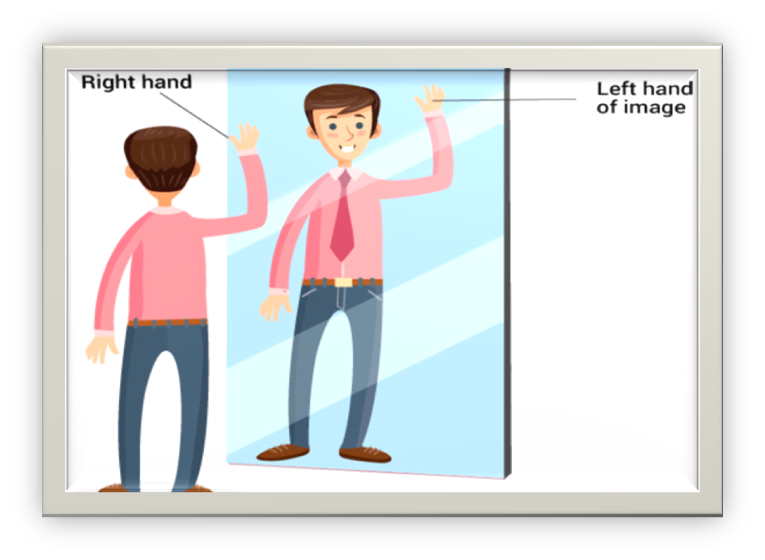
Luminous Objects - Objects which can produce light on their own are called luminous objects. Objects that are visible because of reflected light are known as illuminated objects, For example, tube light, bulb, the Sun, and the Stars.
Illuminated Objects - Objects that do not produce light on their own but reflect the light that falls upon them are called illuminated objects. Objects that give their own light are known as luminous objects. For example, the moon.
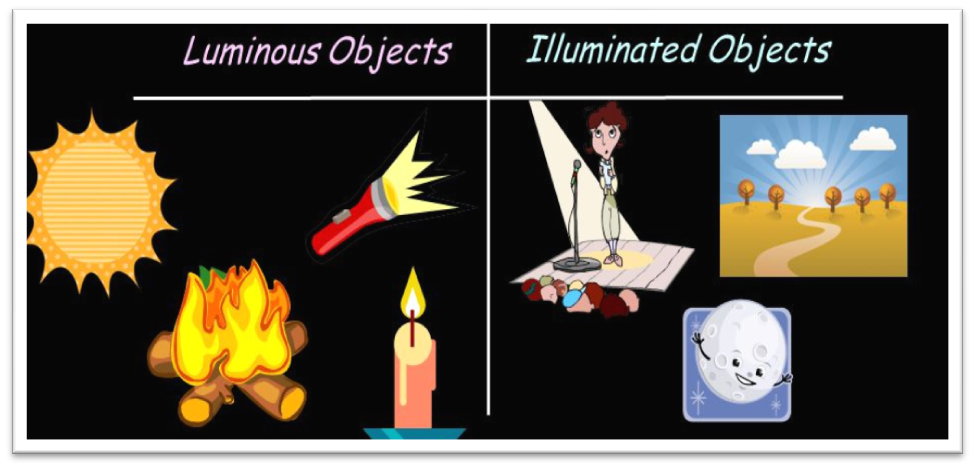

 PathSet Publications
PathSet Publications
